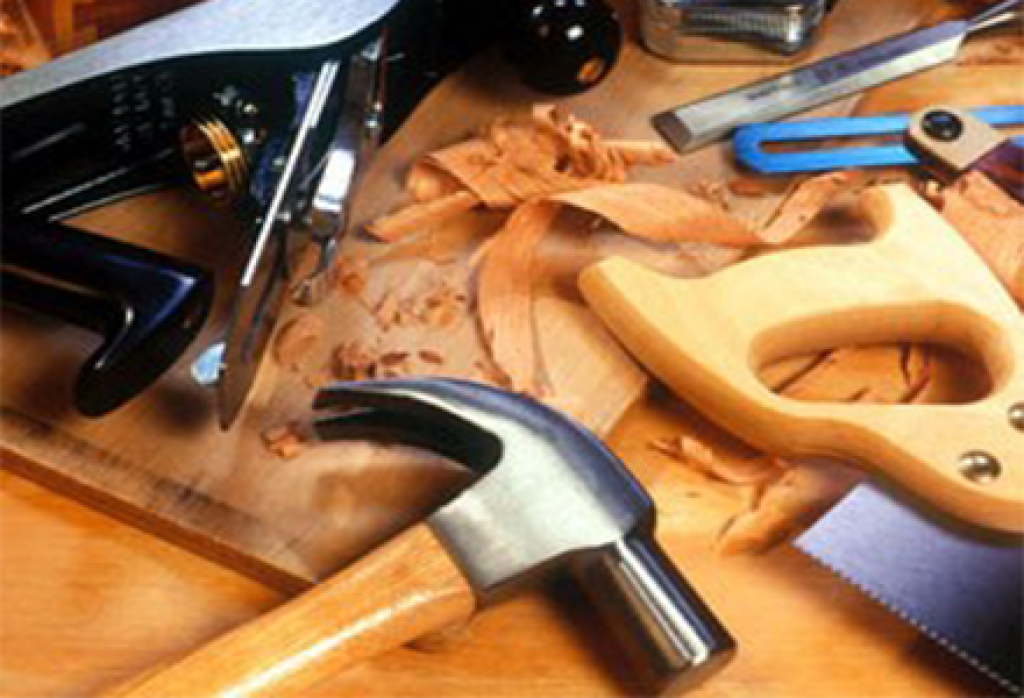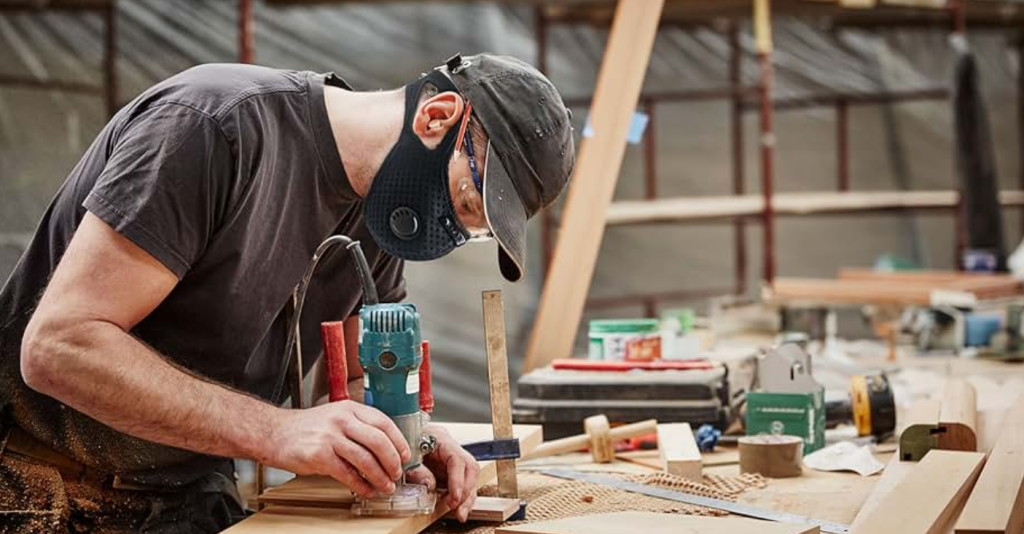Contents
The Ultimate Beginner’s Guide to Woodworking
Woodworking isn’t merely a hobby; it’s a portal to a world where creativity meets functionality. In fact, “woodworking for beginners” is an invitation to explore this transformative craft. It transforms raw, unyielding timber into intricate treasures that carry the soul of craftsmanship in every grain. Whether you’re looking to create a rustic bookshelf or carve an ornate accent piece, woodworking offers both therapeutic satisfaction and the thrill of producing something tangible with your own hands. Let’s dive into why woodworking is the perfect hobby and explore every facet of this rewarding craft.
1. Why Woodworking is the Perfect Hobby
Imagine the scent of freshly cut wood mingling with the subtle tang of sawdust—a multisensory experience that transports you to a realm far removed from the digital buzz of modern life. Woodworking provides a unique escape: you reclaim control over your time, creativity, and even your surroundings. In a world where automation and screens dominate, the artistry of woodworking re-establishes a human connection to nature. Every chip and shavings tell a story; every precise cut is a testament to ingenuity. This isn’t about mere construction—it’s about breathing life into lumber and discovering a passion that molds both the material and your spirit.
Whether you’re building practical pieces for home use or creating artful objects to display, woodworking offers endless challenges and endless rewards. The process is meditative and methodical, giving you both the thrill of creation and the satisfaction of mastery. When you channel your energy into woodworking, you’re not just constructing furniture; you’re sculpting your legacy, one meticulous cut at a time.
2. What You’ll Need to Start
Embarking on your woodworking journey requires assembling a modest yet essential toolkit. Below is an in-depth exploration of the basics every beginner must have, paired with a few indispensable safety precautions.
Essential Tools for Woodworking

Cordless Drill/Driver
A powerhouse for countless tasks—drilling, fastening, and even mixing adhesives. Modern drills boast robust batteries and precise speed control to accommodate delicate and heavy-duty tasks alike.
Circular Saw
An indispensable tool for straight, clean cuts. Modern circular saws come with laser guides and ergonomic designs to help novices achieve perfect measurements, ensuring every slice is precise.
Jigsaw
For those artistic curves and intricate designs, a jigsaw is your best ally. Its versatility allows you to cut unusual shapes, making it ideal for creating decorative pieces or custom furniture.
Orbital Sander
Achieving a flawless finish is crucial, and an orbital sander can transform rough surfaces into silky smooth ones, ready for staining or painting. It bridges the gap between raw craftsmanship and refined artistry.
Tape Measure and Speed Square
The bedrock of accuracy. Accurate measurements are non-negotiable; a reliable tape measure and speed square are your best friends, ensuring every cut and joint is perfectly aligned.
Clamps
Often overlooked, clamps are vital in holding pieces securely as glue sets or during precise joinery. They ensure stability, reducing errors and saving precious time.
Comparison Table: Basic Tools
| Tool | Purpose | Key Feature | Example Model |
|---|---|---|---|
| Cordless Drill | Drilling and fastening | Long-lasting battery | DEWALT 20V Max |
| Circular Saw | Cutting straight lines | Ergonomic design | Makita 5007Mg |
| Jigsaw | Cutting curves and complex shapes | Variable speed | BLACK+DECKER Smart |
| Orbital Sander | Achieving a smooth finish | Dust collection system | Bosch ROS20VSC |
| Tape Measure | Precision measuring | Durable, retractable design | Stanley FatMax 25’ |
| Speed Square | Marking angles, ensuring accuracy | Non-slip grip | Swanson Speed Square |
| Clamps | Holding materials in place | Quick-release mechanism | IRWIN Quick-Grip |
Safety Gear: Protecting the Craftsman

While the excitement of transforming wood is irresistible, safety remains paramount. Equip yourself with the following gear to safeguard your health:
- Safety Glasses: Prevent microscopic wood particles from injuring your eyes.
- Hearing Protection: Prolonged exposure to power tools can be harmful; invest in quality ear muffs or plugs.
- Dust Mask or Respirator: Sanding and cutting generate fine particulates; protect your lungs with a reliable mask.
- Work Gloves: Maintain a solid grip and prevent splinters with sturdy, yet flexible gloves.
Attention to these details not only prolongs your working life but also instills discipline—a critical element in a craft where precision and care go hand in hand.
3. How to Set Up a Simple Workspace

Your workspace is a sanctuary—a meticulously organized hub where creativity flourishes. The beauty of woodworking lies not just in the projects you complete but in the environment that nurtures your creative process. Setting up a simple yet efficient workspace is an art in itself.
Start by designating a specific area, whether it’s a small corner in a garage, a converted shed, or a well-lit room in your home. Prioritize a clean, clutter-free environment where every tool has its place. A sturdy workbench should be at the center of your setup, complemented by durable storage solutions such as wall-mounted tool holders or portable organizers. Good lighting is non-negotiable; natural light is best, but supplement with LED fixtures for those late-night sessions.
Ventilation is crucial—especially if you’re sanding or applying finishes. A fan or an exhaust system will help maintain a fresh working atmosphere. Lastly, incorporate inspirational elements: a bulletin board displaying favorite project photos, sketches, or even motivational quotes can spark creative ideas when you need them most.
Creating a purposeful workspace isn’t merely functional; it inspires confidence, fosters efficiency, and transforms your woodworking sessions into a harmonious ritual.
4. Best Wood Types for Beginners
The raw material you choose is the foundation of every woodworking project. For beginners, selecting the right wood can make the difference between a satisfying project and one fraught with frustration. Let’s explore the best types of wood that are forgiving, affordable, and ideal for honing your skills.
Pine:
A ubiquitous favorite, pine is soft, easy to cut, and abundantly available at a low price. Its forgiving nature makes it ideal for beginners, as mistakes are less catastrophic. Pine’s abundant grain and texture lend themselves well to a variety of finishes—from rustic charm to sleek modern aesthetics.
Poplar:
Poplar is renowned for its smooth texture and even grain, making it perfect for projects that are painted rather than stained. It offers a blank canvas that does not demand extensive finishing work, enabling you to focus on mastering the craft of cutting and assembling.
Cedar:
With its natural resistance to decay and distinctive aromatic properties, cedar is a delight for outdoor projects. Its fibrous, yet workable composition allows for creative expression while requiring minimal sanding. Cedar projects tend to exude a timeless elegance that is both eye-catching and durable.
Avoid hardwoods such as oak or maple when starting out. These denser woods demand more sophisticated tools and a higher skill level; they’re best reserved for when your craftsmanship has matured. By beginning with softer, more forgiving species, you create an environment conducive to learning and experimentation.
5. Simple Starter Projects
The best way to cement your newfound woodworking prowess is to dive headlong into simple projects. These starter projects are designed to build your confidence and refine your techniques, providing a robust foundation for more ambitious endeavors.
DIY Bookshelf:
A bookshelf is more than just storage; it’s an introduction to precise measurements, clean cuts, and solid joinery. It’s a practical project with plenty of room for creative modification, from rustic designs to contemporary sleekness. Its simplicity belies the technical skills required to build something both sturdy and visually pleasing.
Rustic Coffee Table:
Coffee tables are a staple in woodworking. This project teaches you essential techniques such as frame construction, surface finishing, and the art of joinery. The coffee table project provides a tangible, functional piece that you can display proudly in your living space, enhancing your home with handcrafted beauty.
Simple Birdhouse:
A birdhouse is an enchanting project that engages your creativity on a smaller, manageable scale. Ideal for practice, it involves basic cuts and assembly, yet offers endless variations in design. This project invites playful experimentation without demanding extensive resources.
Tool Caddy:
A tool caddy is a pragmatic project that yields direct functional benefits—organizing your tools effectively while teaching you the principles of mobile construction. This project equips you with the experience necessary to design more elaborate storage solutions in the future.
Each project should include detailed, step-by-step instructions enriched with images, diagrams, and even comparison tables. Cross-link related projects within your blog to create a cohesive learning environment and enhance your site’s internal linking structure.
6. Mistakes to Avoid
Every seasoned woodworker has encountered setbacks that, with hindsight, become cherished lessons. As a beginner, it is imperative to navigate the pitfalls that might hinder your progress. Recognizing common mistakes early will save you time, money, and frustration.
Skipping Safety Measures:
This is perhaps the most critical mistake. Neglecting your safety gear—safety glasses, ear protection, dust masks—can lead to serious injuries and long-term health issues. Prioritize your well-being above all else.
Imprecise Measurements:
Woodworking is inherently meticulous. A single miscalculation can have cascading effects, resulting in asymmetrical cuts, unstable joints, or wasted materials. Invest time in double-checking every measurement; your future self will thank you.
Overcomplicating Projects:
New woodworkers often succumb to the temptation of overly intricate designs. This leads to frustration, incomplete projects, and a steep learning curve. Begin with simple, well-defined projects that solidify your foundational skills before progressing to more complex works.
Inadequate Finishing:
Finishing is the step that transforms a crude assembly into a work of art. Skipping adequate sanding, staining, or sealing can render even the most well-constructed piece unimpressive. Dedicate time to perfecting your finishing techniques to elevate your project’s overall quality.
Neglecting Tool Maintenance:
Your tools are your lifeblood in woodworking. Failing to clean, sharpen, or properly maintain them not only diminishes their lifespan but also jeopardizes the quality of your work. Regular maintenance is a ritual that guarantees both safety and precision.
By conscientiously avoiding these pitfalls, you lay the groundwork for a smooth, progressive journey in woodworking. Learn from these missteps, adapt your methods, and let every mistake refine your technique.
7. Resources to Continue Learning
The path to mastering woodworking is paved with constant learning. Here are some stellar resources to keep you inspired and informed:
YouTube Channels:
Channels like “Woodworking for Mere Mortals” and “The Wood Whisperer” provide a treasure trove of video tutorials that demonstrate techniques, project builds, and tool reviews. Their engaging, hands-on approach is invaluable for visual learners.
Online Courses:
Platforms such as Udemy and Skillshare offer comprehensive woodworking courses that cater to various skill levels. These structured lessons delve into every aspect of the craft—from basic measurements to advanced joinery.
Books and Magazines:
Consider investing in seminal works such as The Complete Manual of Woodworking or Woodworking Basics. Magazines like Fine Woodworking offer ongoing inspiration and cutting-edge industry insights.
Local Workshops and Community Classes:
Sometimes the best lessons are learned in person. Local workshops provide an opportunity to practice under the guidance of seasoned professionals while connecting with a community of like-minded craft enthusiasts.
Forums and Social Media Groups:
Online communities like Reddit’s r/woodworking or dedicated Facebook groups offer a platform to ask questions, share progress, and receive feedback. Peer support is invaluable as you navigate the challenges of your craft.
Each of these resources fosters an environment of continuous improvement. Embrace every opportunity to learn, and let curiosity be the fuel that propels you forward.
8. Conclusion
Woodworking is not merely an act—it’s an odyssey of transformation. As you carve, shape, and polish, you’re not only constructing functional art; you’re reawakening a passion that bridges the past and the future. With every project, you become more adept, more creative, and more fulfilled.
There’s no better moment to begin than now. If you’re ready to embark on a journey where precision meets passion, subscribe to our newsletter for exclusive tips, project blueprints, and special discounts. Download our free PDF checklist, “The Ultimate Woodworking Starter Toolkit,” and take your first step towards mastery.
[Subscribe Now and Download Your Free Toolkit PDF 7 Deadly Mistakes When Setting Up Shop]
Embrace the craft. Elevate your skills. Transform raw timber into timeless treasures, and let every creation be a testament to your enduring spirit.


